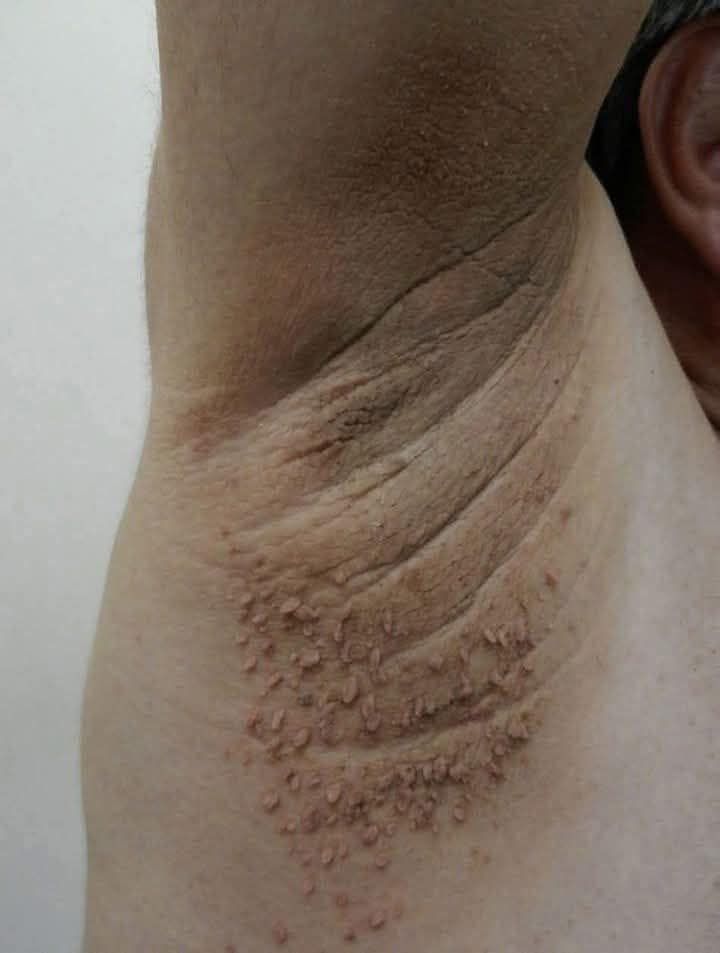Have You Noticed Dark, Velvety Skin Patches? Don’t Ignore This Warning Sign
Have you or someone you know noticed dark, velvety patches of skin on the back of the neck or under the arms? While they might appear to be a buildup of dirt, these skin changes could signal an underlying health condition—one that shouldn’t be overlooked.
This condition is called Acanthosis Nigricans, and it’s commonly linked to insulin resistance and elevated blood sugar levels. Recognizing this symptom early can be key in preventing more serious health issues, such as type 2 diabetes.
What Is Acanthosis Nigricans?
Acanthosis Nigricans is a skin condition marked by darkened, thickened, and velvety areas of skin, typically found in skin folds such as:
The back of the neck
The armpits
The groin area
These patches may feel soft or textured, and in some cases, show increased hair growth. Though they may look like dirt, they cannot be washed off and should not be mistaken for poor hygiene.
What Causes It?
While Acanthosis Nigricans is not a disease itself, it often points to an underlying medical condition. Common causes include:
Insulin resistance, frequently found in individuals with prediabetes or type 2 diabetes
Obesity, particularly in children and teens
Hormonal disorders
Genetic factors
Certain medications or, rarely, tumors
Doctors warn that people with obesity who develop Acanthosis Nigricans are at higher risk of developing type 2 diabetes, making it an important early warning sign.
Expert Insight: A Health Alert
Dr. Hafizah Mohamed, a physician and member of the #medtweetMY health awareness initiative, recently shared on social media that dark patches on a child’s neck could be an early sign of elevated blood sugar.
“This isn’t just dead skin buildup. If your child or anyone you know has these dark patches, it might be time to check their blood sugar,” she advised.
She also emphasized that these patches are not usually itchy or painful. If the skin is red, itchy, or sore, it may be another condition like eczema and should be evaluated differently.
How to Check Blood Sugar Levels
Many pharmacies now offer on-the-spot blood glucose testing, and home glucose meters are widely available. If you’re concerned about skin changes or other symptoms, consult a healthcare provider for proper testing and diagnosis.
Regular blood sugar monitoring can help catch early signs of prediabetes—allowing for lifestyle changes or treatment before more serious complications arise.
Other Conditions That Resemble It
It’s important to remember that not all dark skin patches are caused by Acanthosis Nigricans. Another condition, Terra Firma-Forme Dermatosis (TFFD), presents with similar brown or black plaques, but these can often be wiped away with 70% isopropyl alcohol.
If you notice persistent dark spots that don’t wash off, it’s best to have them assessed by a doctor to determine whether it’s Acanthosis Nigricans, TFFD, or another skin issue.
When to See a Doctor
Seek medical advice if:
You or your child develops sudden dark, thick skin patches
The patches spread or become irritated
There’s a family history of diabetes or metabolic disorders
You also experience symptoms like frequent urination, excessive thirst, or fatigue
Early diagnosis and intervention can improve long-term health outcomes significantly.
Prevention and Lifestyle Recommendations
If Acanthosis Nigricans is linked to insulin resistance or obesity, the following steps can help manage or reduce its appearance:
Follow a balanced diet rich in whole grains, vegetables, and lean proteins
Increase physical activity, aiming for 30 minutes most days
Maintain a healthy body weight
Limit consumption of sugary drinks and highly processed foods
Have regular checkups for blood sugar and cholesterol levels
In some cases, a doctor may prescribe creams or medications to reduce the skin’s appearance, but treating the root cause remains most important.
Conclusion: Pay Attention to Your Skin
Dark patches on the neck or underarms might seem harmless—but they could be early indicators of underlying blood sugar issues or metabolic imbalances. While not always serious, they deserve attention.
Consulting a healthcare provider is the best way to get clarity and peace of mind. As always, staying informed and living a healthy lifestyle are key steps toward long-term well-being.
